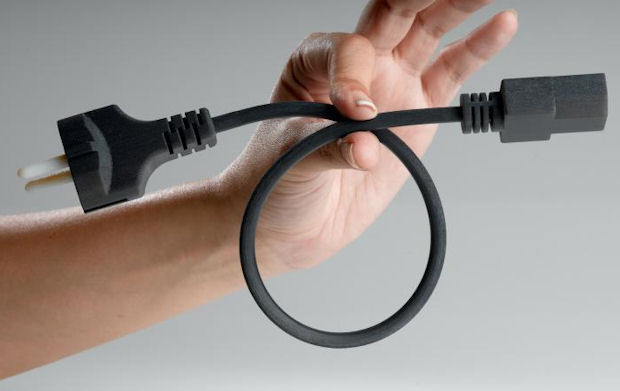Top Five Reasons to Integrate 3D Printing into Your Product Development Lifecycle
June 23, 2014
 Dear Desktop Engineering Reader:
Dear Desktop Engineering Reader:
Back around 2000, Desktop Engineering had this new guy in marketing. Amiable sort. He wore a cowboy hat for reasons unknown. His job was to gather stats on reader interests and then write stuff for the ad reps. We were doing an editorial focus on 3D printing, so he hands me a draft to tech review. It’s all about document printers. Therein ensued a lesson in what was then a newfangled technology. I’m not sure he got it.
Astonishingly, many people still don’t get 3D printing. It’s everywhere in the tech media, business media, the popular press and even TV cop shows. If you’re trying to get through to TPTB (the powers that be) on the merits of 3D printing, today’s Check it Out is for you. The link goes to a paper with as clear an account of how and why your company will benefit from 3D printing as you’re going to find.
The “Top Five Reasons to Integrate 3D Printing into Your Product Development Lifecycle” is a succinct, eminently readable paper from Stratasys, focused mostly on the Stratasys design series line of 3D printers. Weighing in at just five pages, it covers a lot of ground in a manner that will interest your corporate skeptics without swamping them with techno minutiae. Those in on 3D printing will have a ready set of responses to any generalized questioning.
Here are the top five reasons:
- Designers Can Prototype More Iterations without Blowing the Timeline or Budget
- Better Collaboration Resulting in Improved Design and Manufacturability
- Field Test with Prototypes that Resemble the Final Product Provides Insight into Potential Design Flaws
- Improve Customer Satisfaction
- Seeing Is Believing
- Additional Considerations
Yep, that’s six. We’ll get to the last reason in a sec.
As you can readily see, each section head just about says it all. Every section follows the same pattern: Additional comments on the section theme backed with a real-world testimonial or two.
The testimonials are five-star. Each is a nugget of hard data or killer insight. For example, the first reason ends with the executive vice president from Ivivi Technologies saying: “We’ve cut an average of five to six weeks off the clinical trial device production process.” The fifth reason, “Seeing Is Believing,” features a quote that sums up 3D printing: “No matter how good our 3D graphics are, there is nothing like a model in your hands.”
OK, the sixth section, “Additional Considerations.” It offers a pair of reasons to consider 3D printing. The first is its ability to drive revenue. This can be a service bureau making prototypes for clients or building prototypes to entice customers to use your manufacturing facilities.
The second is, in my humble opinion, what 3D printing is all about. Stratasys, and other people who study this market, know that companies with in-house 3D printing simply find ways to use the technology that go way beyond their original expectations. 3D printing technology has an inherent allure that makes you want to explore, do more and innovate with it.
It would be no surprise if most DE readers would like to use 3D printing at work. Only a lot of you can’t because you just have not convinced TPTB guarding the corporate checkbook of its merits. The “Top Five Reasons to Integrate 3D Printing into Your Product Development Lifecycle” sheds a lot of light on how and why 3D printing can be an vital asset driver for any engineering outfit. Hit today’s Check it Out link and download your complimentary copy to see for yourself.
Thanks, Pal. – Lockwood
Anthony J. Lockwood
Editor at Large, Desktop Engineering
Subscribe to our FREE magazine, FREE email newsletters or both!
About the Author
Anthony J. Lockwood is Digital Engineering’s founding editor. He is now retired. Contact him via [email protected].
Follow DE






